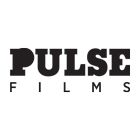
Your Shot: Inside the Animatronic Magic of Ikea’s the Tortoise and the Hare
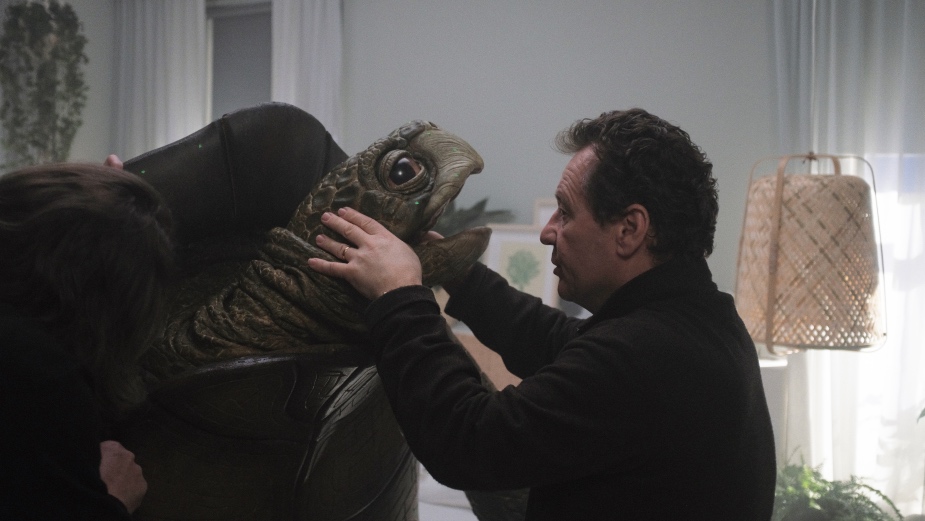
If Aesop were alive today, he’d probably be working in advertising. Big ideas and big characters – and if his stories didn’t change behaviour we wouldn’t still be telling them.
Ikea’s new campaign from Mother London proves that point – it features the iconic battling athletes Tortoise and Hare. In this updated version of the tale, Hare’s haste is translated into an ‘I’ll sleep when I’m dead’ lifestyle of clubs and kebabs, which is leaving him knackered. Tortoise, on the other hand, appreciates the importance of a good night’s sleep.
Sam Pilling is the director who brought this latest iteration of the classic tale to life. And while it might have been tempting to whip up a pair of fully CG characters, he opted to do as much as he could in-camera. That meant models and animatronics – and working with prop, costume and creature expert Robert Allsopp, known for his work on the like of X-Men.
Thankfully, the shoot wrapped up just before the UK went into lockdown – though the edit, post and sound were all done remotely.
LBB> What was it about the script that jumped out at you? And what were the first things that popped into your head?
Sam> I loved the idea of taking a well-known fable, in this case “The Tortoise and the Hare”, and giving it a contemporary backstory. But even more than that, at its heart, it was a story that I could relate to, and indeed, that I think we can all relate to in some way. With the work centred around this universal ‘life truth’ - that “tomorrow starts today” - I wanted to make sure that the story was rooted in reality and didn’t go down a stereotypical fairytale route. Part of that meant using London, or at least a familiar urban cityscape, as the backdrop for the story. And I was excited by the opportunity to shoot on the streets of my beloved London.
That being said, I still wanted the piece to have a lightness of touch and a meta-phorical wink that made the viewer smile and enjoy the ride too. After my first meet-ing at Mother chatting to Anthony and Oli, it was clear that we were all on the same page in terms of how we wanted to approach the film.
We all agreed that we wanted to capture as much as we could in-camera, and my mind jumped straight to Stan Winston’s velociraptor suits for Jurassic Park.
I knew we would have a lot of fun bringing out the animals’ personalities, and in the details of the character designs.

LBB> What did your treatment bring to the original script?
Sam> First off, I set out the playfully realistic tone and the gritty, slice of life visual aesthetic that I wanted to achieve. This went hand-in-hand with the in-camera tech-nical approach, where I referenced the way that practical and digital effects had been combined to great effect in films such as The Shape of Water, A Monster Calls and of course the aforementioned Jurassic Park (sorry, bit of a fan). I termed our he-roes as ‘hu-minals’ and described the delicate balance of reality and fantasy that I hoped to achieve.
After that it was all about bringing their personalities to life. Describing the way they moved and thought, and their attitude to life. I even assigned real-life actors to them as a way of helping people visualise what they were really like – (Donald Glover for the hare and Felicity Jones as the tortoise!)
For the narrative breakdown I went into a lot of detail about the physicality of the hare - his facial expressions, the way his ears moved, the spring in his step, his dejected look and so on… for each main story beat. I also swapped a few scenes around to make his night out feel a little bit more realistic.
But I had the most fun coming up with all the small details and subtle nods to the tortoise and hare fable, such as his lettuce kebab at Aesop’s (I mean where else?!) and his carrot laptop. There were a whole host of other details, such as an Andy Warhol Carrot soup poster, that sadly never made it past legal!
LBB> When and where did the shoot take place and what were the biggest challenges you faced and how did you address them?
Sam> The shoot took place the week before lockdown. Any later and it would have been called off completely so we were really lucky it happened at all!
The bedroom scenes were filmed in Black Island studios and the exteriors across various locations in East London. As ever, there was a lot to shoot in a limited time so we had to be clever with our locations. It all hinged on the final street exterior – as it was important to get the balance right between an attainable and aspirational location. Once we decided on a street in Hackney for our final scene, we could then plot the other locations we needed.
By far, the biggest challenge we faced on set was communicating with the actors and dialling in direction.
The creature’s masks and outfits were visually amazing but came with a few logistical issues that we had to negotiate. The animatronics inside the Hare’s head, for example, were really loud, and the wireless transmission would interfere with our comms kit, which meant that our actor, Kat Boyce, couldn’t hear anything once he was wearing it. On top of that, he couldn’t see much out of the eyeholes either. So he was essentially deaf and blind when in full costume! This meant simple tasks such as walking across the road to meet his friends, or turning his head to look at a certain point off-camera, were extremely difficult and time-consuming to get right.
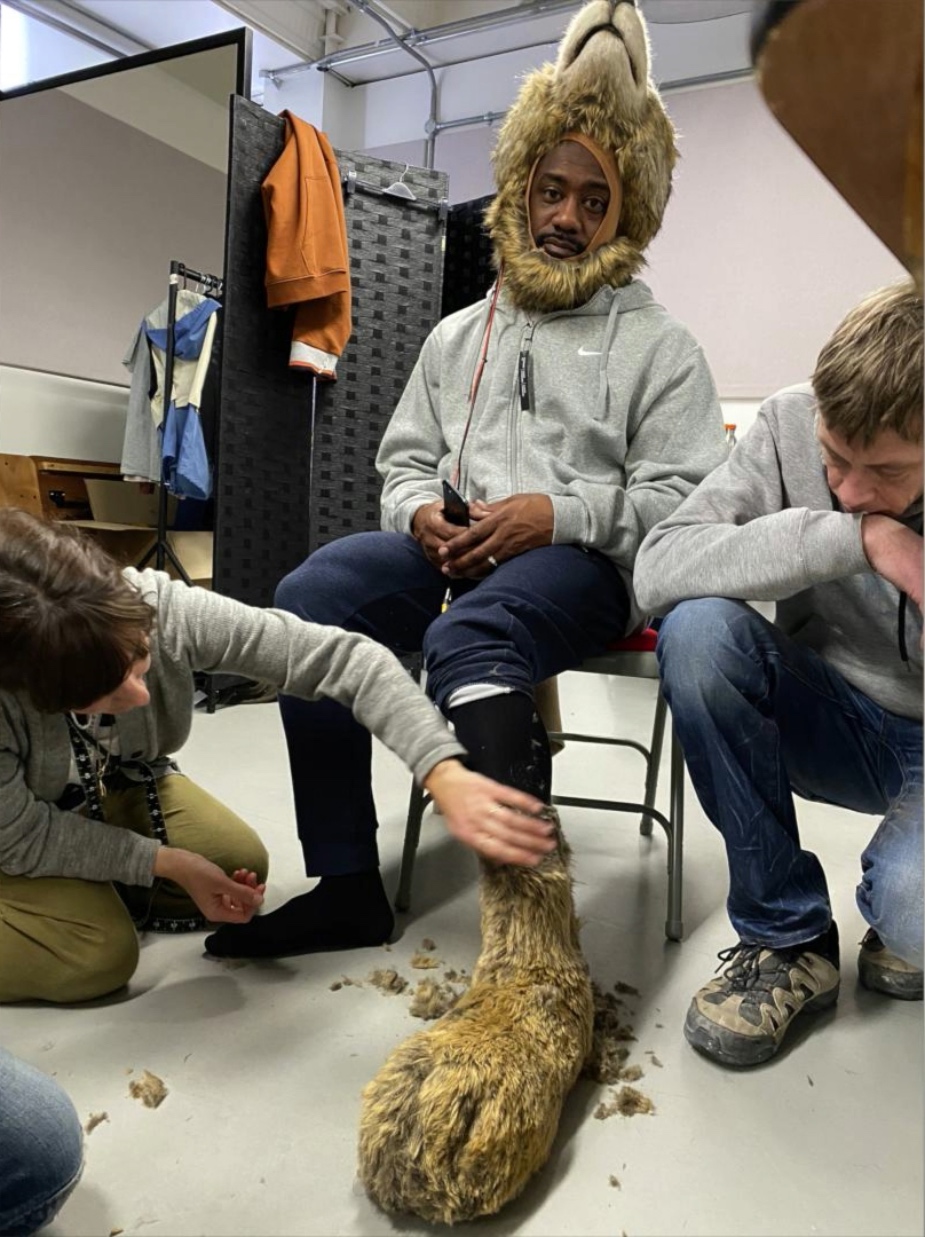
With the tortoise, one of the hardest beats to master was her waking up and rising out of bed. In order to get the correct looking proportions for the tortoise, the costume was designed so her legs were much shorter than Rob Tygner, our actor’s, which meant the bottom of the tortoise’s shell hung somewhere around his knees. Another clever aspect of the design was that Rob would use one of his arms as the tortoise’s head and neck, allowing us to get really fluid and natural neck movements. Although this resulted in a better visual, it meant that Rob couldn’t physically lie horizontally then rise to sitting upright. In order to capture the movement in camera, several members of the production team had to physically lifted Rob from behind, carefully hidden by the large duvet and out of frame.
Again, Rob’s line of sight was obstructed by the tortoise’s shell – a really cool design feature to minimise post-production, but it meant he couldn’t see where he was going either! Thankfully we managed to direct him on the fly shouting instructions - “a little to the left” and so on - as he walked around the bed-room.
In short, the process for directing our lead actors was like nothing I had done before and required a completely new approach.
LBB> I love the character design for Hare and Tortoise - there's enough fun and larger-than-life feeling, but at the same time it feels real and not incongruous with the British streets. How did you develop those looks, who did you collaborate with and did you have any references or inspirations for what that sweet spot between reality and fantasy looked like?
Sam> Getting that balance right between reality and fantasy was probably the biggest part of the design process. We all knew we didn’t want to create a photorealistic Hare and Tortoise, as tonally that wouldn’t feel playful enough, but equally, we didn’t want it to look cheap - like a bloke wearing an animal costume at a theme park. It was also really important that our Hare wasn’t too cute or cartoon-like, but was cool and full of swagger.
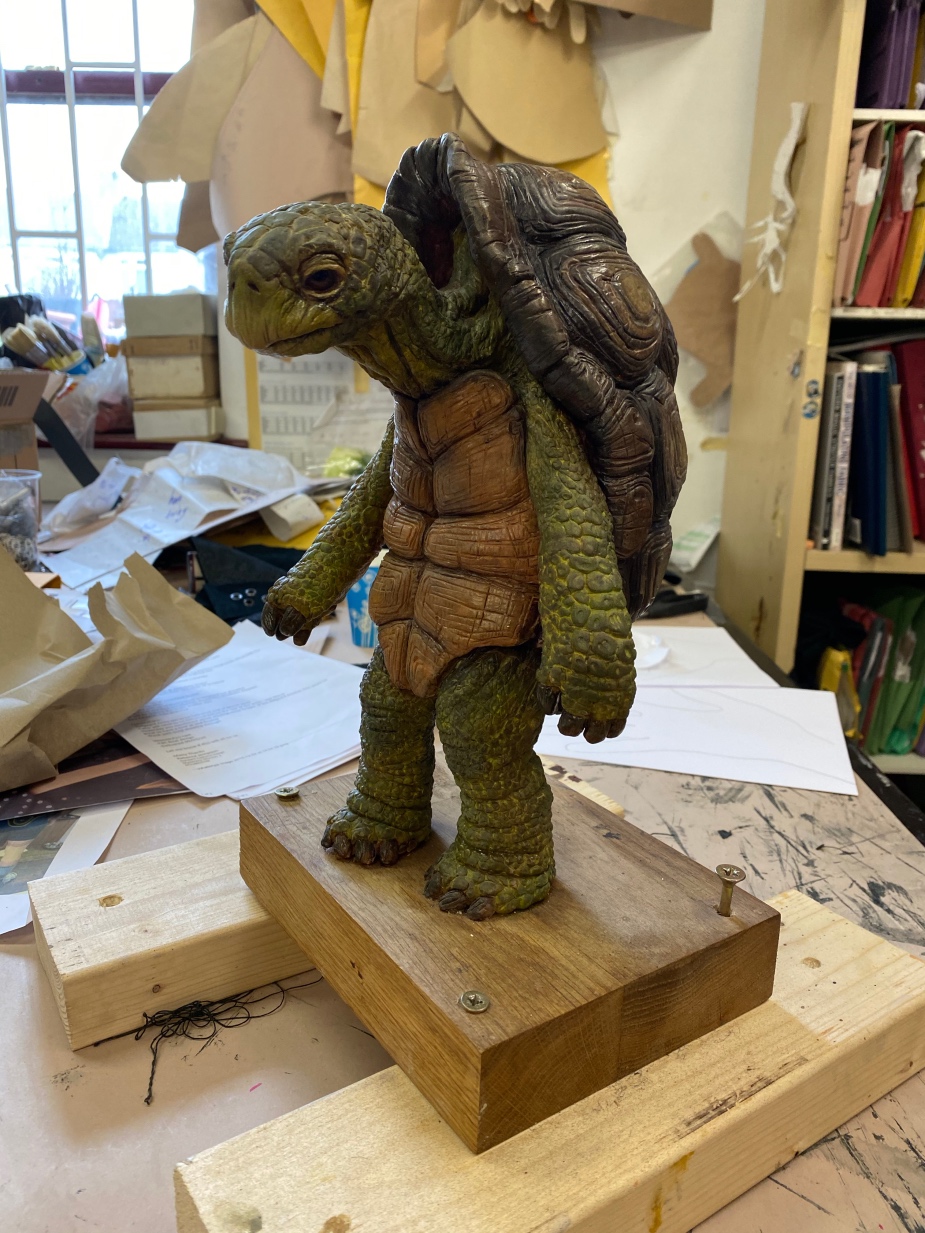
Working with Robert Allsop, we spent several weeks going back and forth, develop-ing and tweaking the character designs, before starting the actual construction pro-cess. A great reference for our initial discussion was the blend between reality and fantasy in Ringan’s Three Little Pigs spot for The Guardian.
After that I looked at everything from old French cigarette card illustrations from the 1930s to Beatrix Potter drawings, Bugs Bunny cartoons, Nick Parks’ Creature Com-forts, the Teenage Mutant Ninja Turtles movie from the 90s, Stan Winston’s Velociraptor suits in the original Jurassic Park, the US TV show Dinosaurs and right the way through to the recent CGI version of Peter Rabbit. Ultimately settling on a combination of naive and photorealistic depictions of animals to create something that (hopefully) landed us right in the middle.
LBB> What did Robert bring to the spot and what was it like working with him?
Sam> Robert’s expertise in creature design was integral to the whole process. After first talking with him, he drew up some initial sketches and we went from there. It was really important that we got the designs right before starting the construction so that we (and the client) had a vague idea of what the characters were going to look like in the end.
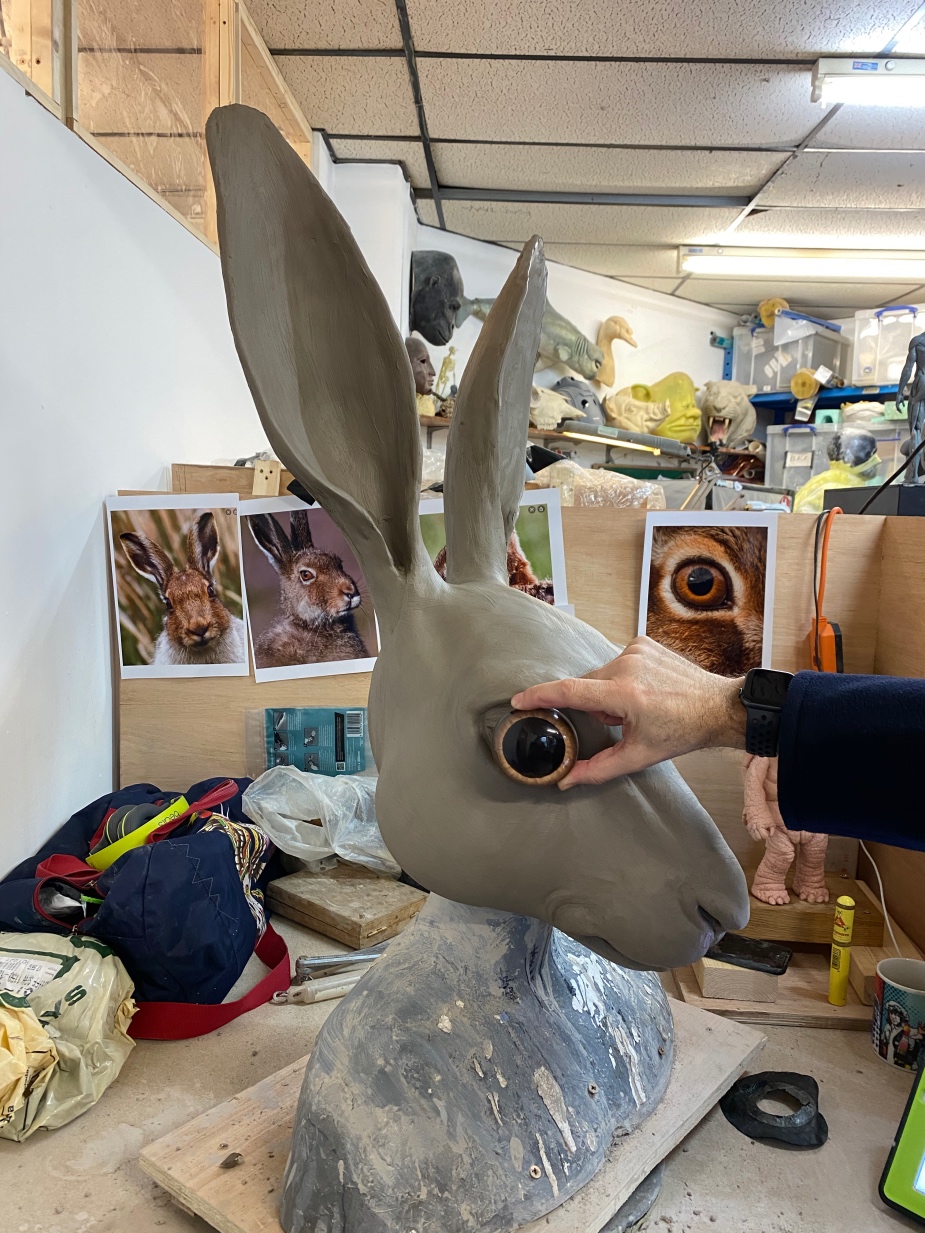
The whole process was both fascinating and scary because there were quite a lot of unknowns. The whole construction took around 12 weeks. So we would touch base with Robert every week or so, to see how it was developing. It was so exciting visiting Rob’s treasure trove of a workshop and gradually seeing the characters come to life – the hare’s clay mould being cast into a mask, then the eyes being put in, then the addition of the fur – and even more so for the tortoise, who began her life as a plasticine maquette, before being constructed out of white mesh and poly-styrene, then cast in rubber before finally being painted. Each week we would see a little bit more and discuss any design issues or amendments, leaving Rob’s workshop feeling giddy with excitement.
We all wanted to achieve as much facial movement and expression in camera, as possible – and the whole way through the process Robert kept saying “we’ll have some movement” but we weren’t sure what that really meant - so when he sent over a little clip of the animatronic hare head sniffing and blinking we all lost our minds!
For me, the whole thing was a bit like being a little kid again – re-living my love of Stan Winston’s amazing Jurassic Park dinosaur constructions, with our tortoise.
LBB> Even though you don't see Hare's face he's doing a lot of great acting - how did you work with the actors to bring their characters to life through movement?
Sam> We carried out an extensive casting session with Kharmel Cochrane, looking for actors who could express themselves through their physicality, rather than facial expressions. It’s such a specific skill to be able to portray a ‘hu-minal’ (not quite an animal, but not fully human either) in a way that feels realistic and believable. We weren’t looking for an over the top ‘animal’ performance, but we needed more expression than a piece of drama. When Kat came in for the session he had such a great attitude and presence, with all the confidence and swagger needed to play our boisterous Hare. He had the perfect balance of physicality and playfulness, whilst being cool as a cucumber too.
We worked with animal choreographer Peter Elliott, rehearsing with Kat & Rob before the shoot – with both roles requiring such widely different approaches.
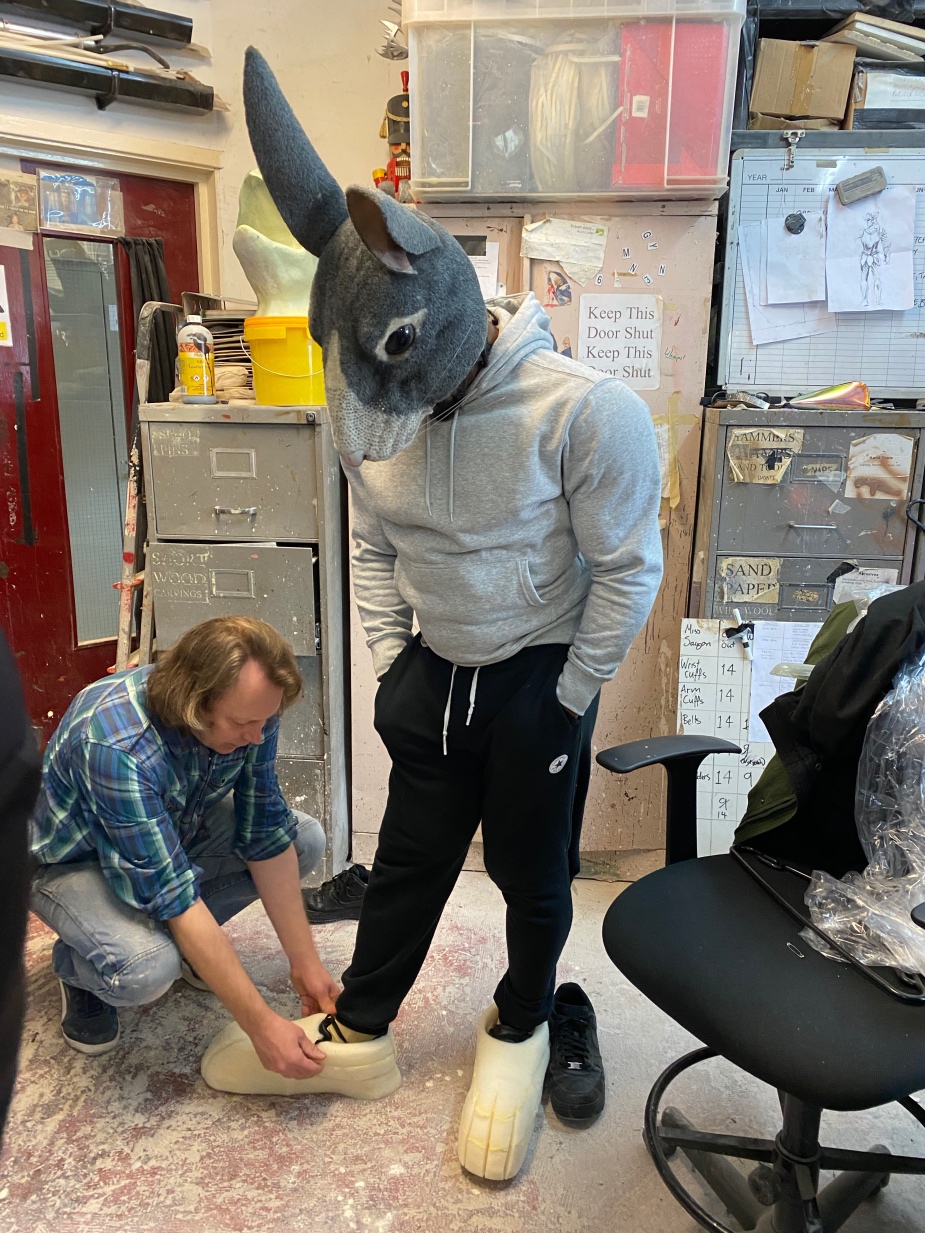
With Kat it was all about creating a spring in his step and emphasising snaps of head movement that felt quite hare-like and alert, whereas Rob is a trained animal actor, so our time was spent finessing the subtle way in which he would use his arm and hand to convey the tortoise’s different emotions and expressions, along with perfecting her lumbering waddle (and of course the waking up sequence!)
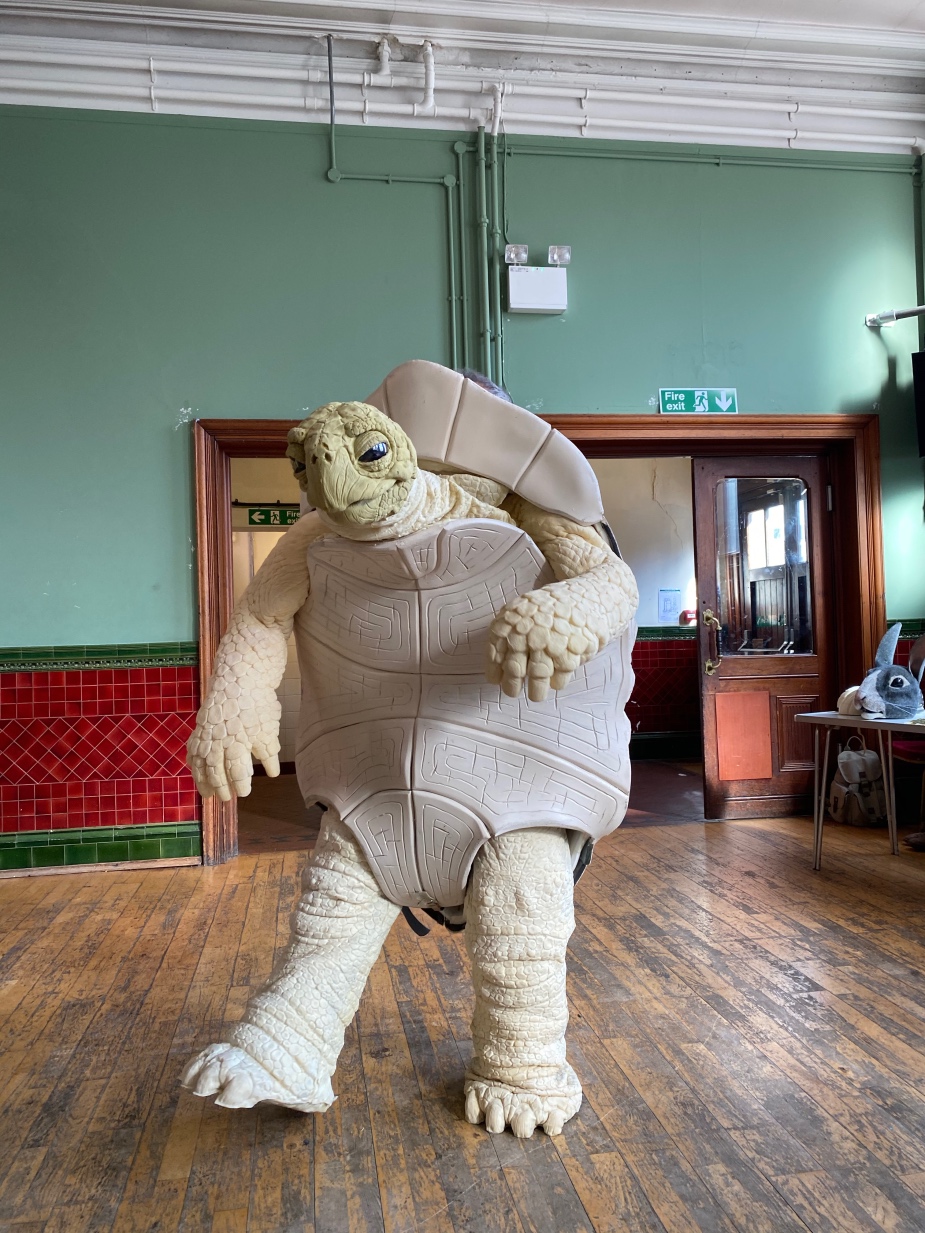
It was such a pleasure working with both actors – the conditions were far from easy, and communication was key. I would often have to talk right into Kat or Rob’s ear in order for them to hear me, and we also had to rely on a lot of hand signals and shouting.
Both actors embodied their roles and truly became their respective animals. So much so Kat would be scratching his itchy muzzle on set, whilst Rob would be pre-tending to eat whatever he could get his hand (or mouth) on.
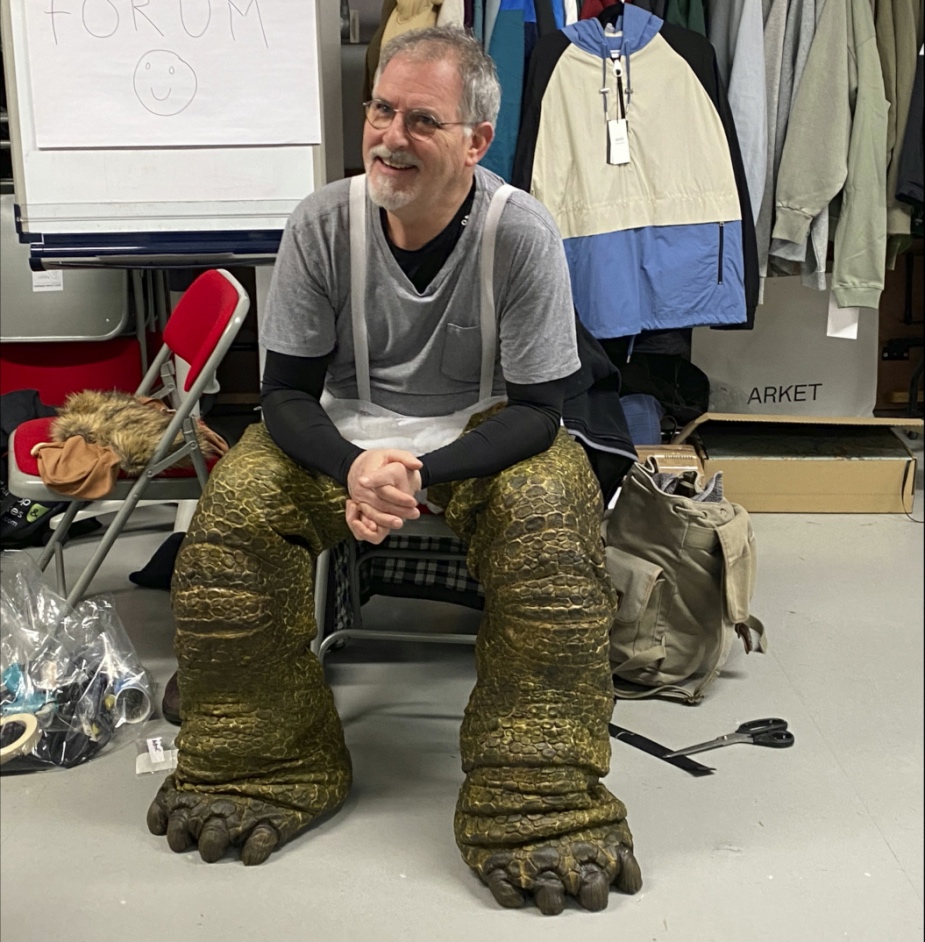
LBB> And how did you and the team at Nineteen Twenty work together to add the spark that brought these animals truly to life?
Sam> To ensure the VFX work felt seamless it was really important that Nineteen Twenty were involved from the beginning. So as soon as the Hare’s head cast was ready, Ludo Fealy, David Keenan and the gang came with us to Robert’s studio to take scans and fur samples, so they could get to work building a CG version of our Hare.
The original intention was that the Hare’s ears would be CGI in the close-ups, but captured in-camera on the wide shots. However, on the shoot day we decided to go full CG on the ears, as it felt a bit too hokey when they didn’t move – so we used our practical set for lighting reference. Once our poor hare had his ears removed and was covered in tracking markers, he looked quite bizarre – so we kept having to hold his ears in place, to get a feel for how the shot was actually going to look.
The animatronic facial movements were amazing – and we had far more range than we were expecting. Before each shot I explained what we were looking for, then I just let Robert get on with it. He had what looked like a remote control car handset, and used the joysticks to control the muzzle movement and blinking.
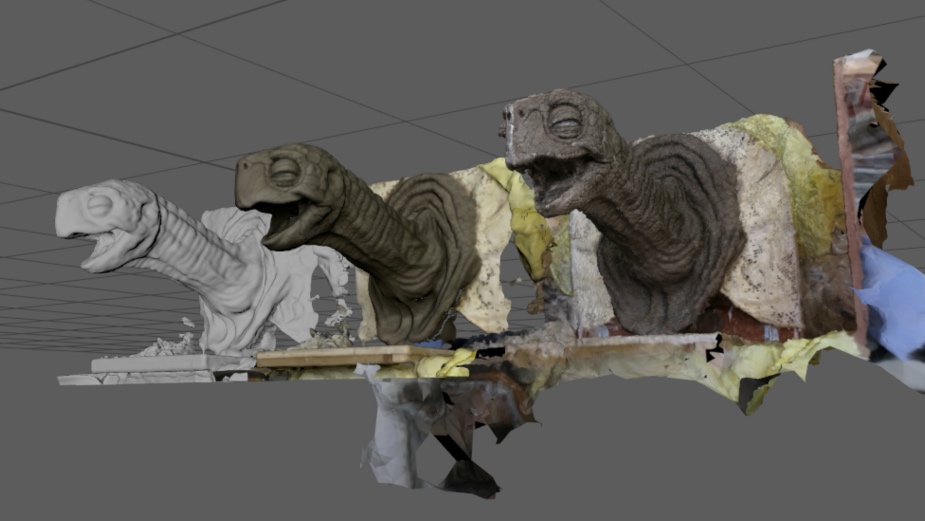
For the most part, this gave us just the right amount of expression or ‘realness’ that we were after but in certain close-ups we wanted to embellish the movement and add a whole load more expression, for added emotion. So some shots required a fair amount of CGI, whereas others didn’t.
Nineteen Twenty also used subtle VFX work throughout, to really bring the characters alive. For example adding a glossy sheen to the animal’s eyes suddenly brought them to life, or an extra blink where there wasn’t one.
LBB> How much of the post was done in lockdown? How did you find that process?
Sam> Almost the entire post process was done during lockdown. And for the large part it worked really well. The process began with Nineteen Twenty and I working on Frankie & Teamviewer – going over each shot in the edit and physically drawing little sketches of how the ears would move and react for each moment. Then Nine-teen Twenty’s amazing animator would work up greyscale ears and we’d review each movement shot by shot.
This part of the process took the longest, as it was crucial the movement felt spot on before Nineteen Twenty started fleshing the ears and expressions out fully.
The only slightly tricky aspect of working on the post during lockdown was the grade, as every screen is different from the next, so we were all looking at a differ-ent image when we were feeding back on it.
Luckily towards the end of the process we managed to go in for a few sessions in the colour suite, which really made all the difference as we were all looking at the same monitor!
We did the same thing with Sound Designer Sam Ashwell at 750 – he did a great job adding some deft little sounds here and there.
But when it comes to describing things like sound and colour, there really is no substitute for talking face to face and hearing or seeing something in the same room together. So I was really grateful that we managed to finish the process in the normal way.
LBB> And did the unfurling lockdown and thinking about the context the spot would air in affect how you and Paul approached the edit?
Sam> No not at all. We cut the ad right at the start of lockdown, which was quite a weird process as in the end it was just Paul Hardcastle, his assistant and myself in the TRIM suite. We didn’t know how long it was all going to last at that point so we just cracked on with the edit as normally as we could. However, given the unprecedented circumstances, we weren’t sure if the spot would have to be put on ice.
One thing that did come out in the edit, was the final shot of the Hare having over-slept, waking up with that “oh shit” look on his face. We’ve all been there, and it fit-ted the story so well. But we never shot for it. It was just one of those things I tried in the edit, and just felt right. Thankfully the guys at Nineteen Twenty were able to help us out with the Hare’s surprised facial expression and it worked brilliantly!
LBB> At what point in the journey did you come across the track and what was it you were looking for in the track?
Sam> The Roots Manuva track was definitely on the table from quite early on and a lot of the team were really into it. Being a bit of a hip-hop head I have always loved the tune, but I wasn’t 100 percent convinced it was right for this. I wanted to make sure we weren’t trying too hard to be ‘cool’ so we went through A LOT of music. There were quite a few blues and alternative electronic tracks that felt really good but in the end the sheer swagger and playful lyrics of “Witness The Fitness” won over. Plus there were a couple of lovely nods to the narrative in there too:
“breakneck speed, we down ten pints of bitter…”
“we lean all day and some say that ain’t productive…”
LBB> The spot is full of so many great details and visual jokes - what are your favourite moments and why?
Sam> I love the Carrot (Apple) laptop and Aesop’s Kebab too, because it was something I’d wanted to do from the off.
But my absolute favourite is the “Go Slow” Road Safety sign outside Aesop’s Kebab.
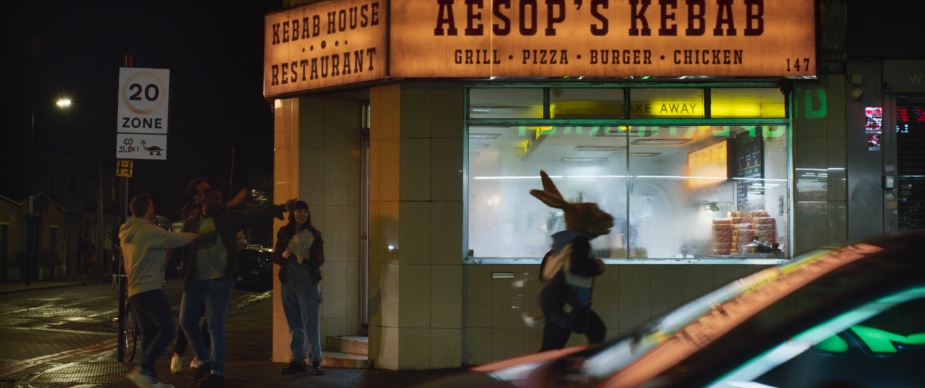
When we were filming I noticed the 20mph sign had an extra panel underneath that was completely faded. And I instantly thought of those “go slow” signs that councils put up, hand-drawn by children as a poignant reminder to drivers.
There’s one that I’d seen in my local area with a drawing of a tortoise on it, and knew that we had to put it on the sign. Even though it was something that most viewers would never notice!
LBB>Are you more Tortoise or more Hare?
Sam> Ha! As much as I would love to be the Tortoise, I’m definitely more Hare than I care to admit. (I mean who doesn’t love a lettuce kebab at 2 in the morning?!)







